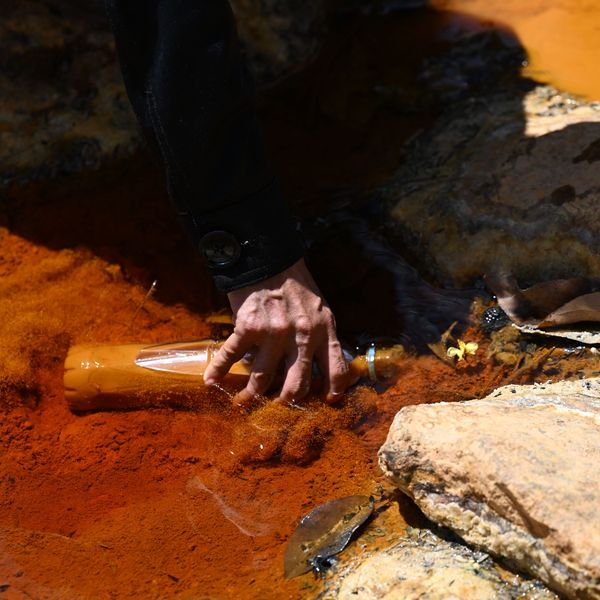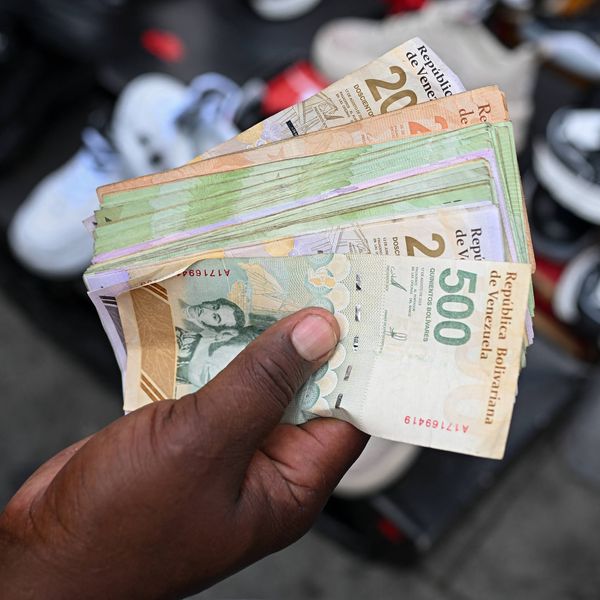'Capitalism vs. Nature': Dominican Republic Activists Fight to Save Mountain from Mining
Loma Miranda residents have set up camp on mountain grounds to protect it from government exploitation
A government plan to use Loma Miranda for nickel mining would result in irreparable environmental harm, the activists say. That, in turn, threatens the communities that depend on the mountain, which takes up 16 square miles, to provide fresh drinking water and other resources to residents through its springs, rivers, and creeks.
"It's one of the most important mountain systems in the Dominican Republic," Victor Medrano of the Ecological Society of Cibao told Al Jazeera. "It produces enough water to provide to the surrounding communities irrigation for the entire region and hydroelectric power."
The government announced its plans to mine Loma Miranda in 2014, prompting protests by residents and activists around the country.
In response, the Dominican Republic Senate passed legislation in August to designate the mountain a national park and protect it from exploitation by mining companies. But President Danilo Medina rejected the bill.
Al Jazeera continues:
Refusing to back down, activists established a permanent camp at Loma Miranda, from which they have launched a national movement to protect the mountain and founded the headquarters of a future national park.
"By the people's decision, Loma Miranda is already a national park, and we're here to defend it," Sanchez said.
In fact, more than 80 percent of Dominicans support a mining ban at the mountain, according to a 2013 Gallup poll published in the paper Hoy.
Despite their efforts, the government appears to be pushing forward with mining plans, including by offering exploratory arrangements to foreign energy companies. At least one company, Glencore Falcondo, is currently conducting research there.
"It's a new form of colonialism," Rafael Jimenez Abad, a Loma Miranda camp leader and university professor, told Al Jazeera. "Our fight is about life or death. It's capitalism versus nature."
An Urgent Message From Our Co-Founder
Dear Common Dreams reader, The U.S. is on a fast track to authoritarianism like nothing I've ever seen. Meanwhile, corporate news outlets are utterly capitulating to Trump, twisting their coverage to avoid drawing his ire while lining up to stuff cash in his pockets. That's why I believe that Common Dreams is doing the best and most consequential reporting that we've ever done. Our small but mighty team is a progressive reporting powerhouse, covering the news every day that the corporate media never will. Our mission has always been simple: To inform. To inspire. And to ignite change for the common good. Now here's the key piece that I want all our readers to understand: None of this would be possible without your financial support. That's not just some fundraising cliche. It's the absolute and literal truth. We don't accept corporate advertising and never will. We don't have a paywall because we don't think people should be blocked from critical news based on their ability to pay. Everything we do is funded by the donations of readers like you. Will you donate now to help power the nonprofit, independent reporting of Common Dreams? Thank you for being a vital member of our community. Together, we can keep independent journalism alive when it’s needed most. - Craig Brown, Co-founder |
A government plan to use Loma Miranda for nickel mining would result in irreparable environmental harm, the activists say. That, in turn, threatens the communities that depend on the mountain, which takes up 16 square miles, to provide fresh drinking water and other resources to residents through its springs, rivers, and creeks.
"It's one of the most important mountain systems in the Dominican Republic," Victor Medrano of the Ecological Society of Cibao told Al Jazeera. "It produces enough water to provide to the surrounding communities irrigation for the entire region and hydroelectric power."
The government announced its plans to mine Loma Miranda in 2014, prompting protests by residents and activists around the country.
In response, the Dominican Republic Senate passed legislation in August to designate the mountain a national park and protect it from exploitation by mining companies. But President Danilo Medina rejected the bill.
Al Jazeera continues:
Refusing to back down, activists established a permanent camp at Loma Miranda, from which they have launched a national movement to protect the mountain and founded the headquarters of a future national park.
"By the people's decision, Loma Miranda is already a national park, and we're here to defend it," Sanchez said.
In fact, more than 80 percent of Dominicans support a mining ban at the mountain, according to a 2013 Gallup poll published in the paper Hoy.
Despite their efforts, the government appears to be pushing forward with mining plans, including by offering exploratory arrangements to foreign energy companies. At least one company, Glencore Falcondo, is currently conducting research there.
"It's a new form of colonialism," Rafael Jimenez Abad, a Loma Miranda camp leader and university professor, told Al Jazeera. "Our fight is about life or death. It's capitalism versus nature."
A government plan to use Loma Miranda for nickel mining would result in irreparable environmental harm, the activists say. That, in turn, threatens the communities that depend on the mountain, which takes up 16 square miles, to provide fresh drinking water and other resources to residents through its springs, rivers, and creeks.
"It's one of the most important mountain systems in the Dominican Republic," Victor Medrano of the Ecological Society of Cibao told Al Jazeera. "It produces enough water to provide to the surrounding communities irrigation for the entire region and hydroelectric power."
The government announced its plans to mine Loma Miranda in 2014, prompting protests by residents and activists around the country.
In response, the Dominican Republic Senate passed legislation in August to designate the mountain a national park and protect it from exploitation by mining companies. But President Danilo Medina rejected the bill.
Al Jazeera continues:
Refusing to back down, activists established a permanent camp at Loma Miranda, from which they have launched a national movement to protect the mountain and founded the headquarters of a future national park.
"By the people's decision, Loma Miranda is already a national park, and we're here to defend it," Sanchez said.
In fact, more than 80 percent of Dominicans support a mining ban at the mountain, according to a 2013 Gallup poll published in the paper Hoy.
Despite their efforts, the government appears to be pushing forward with mining plans, including by offering exploratory arrangements to foreign energy companies. At least one company, Glencore Falcondo, is currently conducting research there.
"It's a new form of colonialism," Rafael Jimenez Abad, a Loma Miranda camp leader and university professor, told Al Jazeera. "Our fight is about life or death. It's capitalism versus nature."

